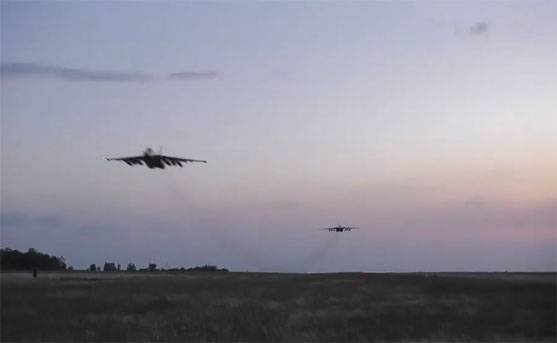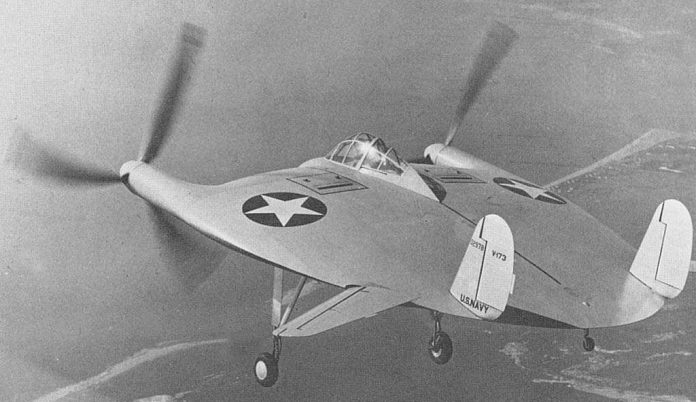
Developments 1947 of the year, when, It is believed, Alien flying saucer crashed near Roswell, USA, seriously influenced world pop culture. The proliferation of portable cameras and movie cameras also played a role., which in the second half of the 20th century became much more accessible. As a result, more and more people became observers of various unidentified flying objects, explain the origin and nature of which they could not, but could capture on film.
Over time, flying saucers and various disk-shaped objects became the symbol of UFOs all over the world., and interest in such unusual phenomena has become so great, that today in the world there is even a UFO Day, which is also called Ufologist's Day. At the same time, the only flying saucers, whose existence has a scientific basis, are in no way connected with guests from other planets or extraterrestrial intelligence and have a completely earthly origin.

Already at the beginning of the 20th century, the first attempts to create aircraft in the form of a disk appeared.. Despite, that the most famous flying saucer projects today are connected with the history of Nazi Germany, the first projects in this area were not in Europe, and in the United States and even before the outbreak of World War II.
Chance Vought's umbrella plane
The first work on unusual projects of aircraft with a round wing began at the very dawn of the development of aviation.. Currently a designer, which for the first time in history turned to the disc-shaped wing, consider the American Chance Vought.
This inventor is 1911 year for the first time proposed to create an aircraft of unusual shape and design. It was an aircraft project with a wooden structure and a large area disk-shaped wing.. Airplane umbrella, created from the simplest materials - wood and fabric - forever went down in history, although he did not make a single flight.
The design of the unusual aircraft was simple and consisted of 9 beams, which, when combined, formed a star. Between the wooden beams Chance Vought stretched an ordinary fabric, a similar design very much resembled an umbrella in shape, so the aircraft got its name. There were two fabric elevons in the tail section of the aircraft., which were located on movable remote beams. The wheeled landing gear of the aircraft was tricycle.
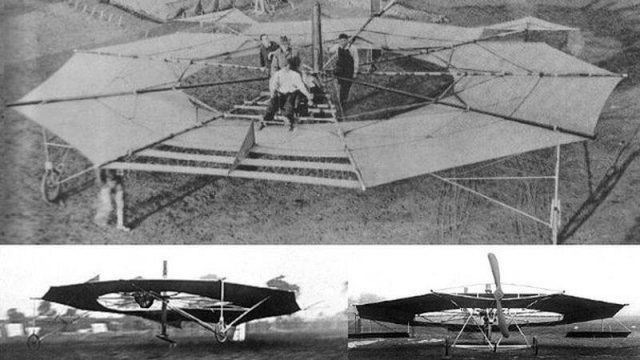 Chance Vought's Umbrella Plane
Chance Vought's Umbrella Plane
The American designer turned to the disk-shaped wing, as I thought, that a large area wing will provide the aircraft with greater lift, allowing the car to lift off the ground at low speed.
Unfortunately, Chance Vought's unusual aircraft never took to the skies, so the designer failed to confirm or refute his ideas. known, that at about the same time a similar aircraft was designed in the UK, but that car crashed on the first flight immediately after taking off from the ground.
Stephen Nemeth's Flying Saucer
The second American designer, who got excited about the idea of creating an aircraft with a disk-shaped wing, Turned out to be Steven Nemeth. Unlike his predecessor, Nemeth created an airplane, who took to the skies and quite successfully flew. An aircraft with an almost perfectly round wing was created by Nemeth in collaboration with students from the University of Miami, it happened in 1934 year.
Unusual aircraft, who riveted the eyes of the townsfolk with one of his appearance, went down in history under the name Nemeth Parasol. Unofficial nicknames have also been assigned to this aircraft., based on its resemblance to an umbrella and a saucer.
To create an unusual aircraft, the designer used an elongated fuselage of a previously decommissioned serial Alliance A-1 Argo biplane., the lengthening of the fuselage made it possible to make it a double. Directly above the fuselage was a perfectly round wing. The wing was located on special struts, like on conventional biplanes, ailerons on the wingtips.
The heart of the aircraft was the Warner Scarab radial aircraft engine, develops power 110 HP. Enough engine power, to provide the aircraft with a maximum flight speed of more than 217 kmh. At the same time, the landing speed was very low - only 40 kmh, which allowed the plane to land on very tiny sites.
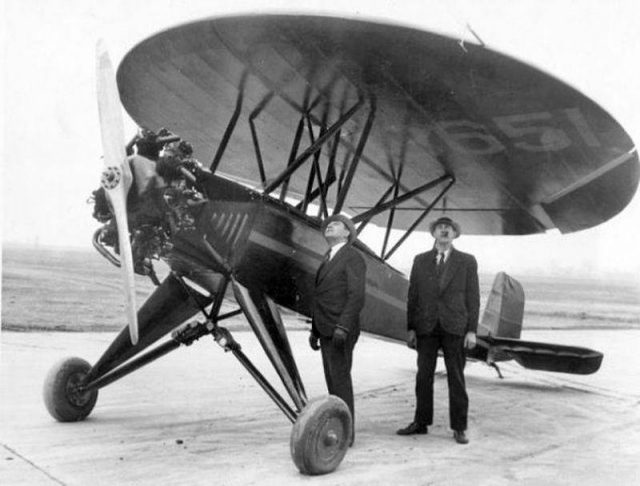 Stephen Nemeth's Flying Saucer
Stephen Nemeth's Flying Saucer
The main feature of the next "flying umbrella" was a round wing with a diameter 4,6 m. A slight elongation of the wing allowed the aircraft to fly at high, than usual, angles of attack, and also provided the aircraft with a smooth and safe descent, which was somewhat reminiscent of a parachute pilot's descent. The wing itself served as a parachute., what Stephen Nemeth demonstrated during test flights. The plane could make a soft landing almost vertically with the engine off..
The low landing speeds and round wing capabilities made the aircraft very easy to fly, even for novice pilots.. Despite a number of advantages of further development, Nemeth's "flying saucer" did not receive, on the edge 1934-1935 years the project was abandoned, things did not go beyond the built flight prototype. At the same time, later developments on this project, likely, used in the USA in the design of gyroplanes.
flying pancake. Fighter XF5U
The United States remained true to itself during the Second World War. Attempts to create an aircraft of an unusual shape continued already in the war years and led to the creation of an experimental fighter, which was named Flying Pancake (flying pancake), official index V-173. Disk Fighter, which designer Charles Zimmerman had a hand in creating, first took to the skies in November 1942 of the year. Later, on the basis of this model, they tried to create a carrier-based fighter., which received the index XF5U.
For the first time, Charles Zimmerman turned to the idea of u200bu200bcreating a disk-shaped aircraft back in 1937 year, his original goal was to create a flying car, about which science fiction writers have already actively written. However, the commercial prospects of the civilian version were considered rather vague.. Therefore, Chance-Vought management, which supported Zimmerman's unusual project, recommended to the designer to abandon the idea of a civil three-seater aircraft, focusing on building a fighter, able to interest the military.
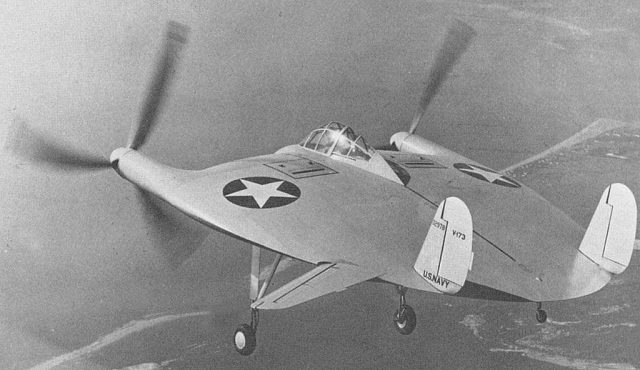 V-173 in the field
V-173 in the field
The result was one of the strangest aircraft of the 20th century., which differed from any contemporary aircraft in its extremely unusual appearance. "Flying pancake" got a glider without a fuselage, semi-circular. In front of the aircraft, the designer placed the cockpit, and on the sides of the cabin were installed two engines with three-bladed propellers.
In the rear of the aircraft, two small half-wings could be seen - horizontal stabilizers with elevators, as well as two vertical stabilizers, on which the rudders are located. The total length of an unusual experimental fighter did not exceed 8,1 m, and the width is 7,1 m.
The new aircraft has been actively tested for several years., the last prototype flights ended only in 1947 year, and in total no less than 190 flights or 132 the hour flew by. At the same time, the maximum flight speed of the V-173 did not exceed 222 kmh. The reason was the low power of the engines, installed on the prototype, each of them developed no more 80 HP.
Much more successful was the prototype for the US Navy., which received the designation XF5U. In total, two experimental aircraft of this model were built.. Aircraft with a maximum takeoff weight of more than 8,5 tons received Pratt engines adequate to their weight and size & Whitney R-2000 power 1350 HP. each. Thanks to this, one of the prototypes developed speeds in level flight 811 kmh.
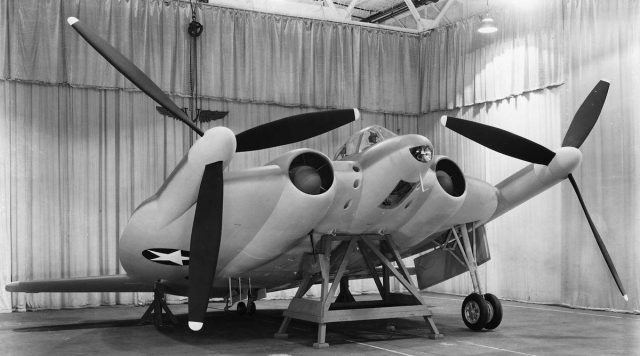 Prototype carrier-based fighter XF5U
Prototype carrier-based fighter XF5U
Despite a number of successes, project turned into 1947 year. Although the XF5U could be effectively used from aircraft carriers, when more weight 8,5 tons the plane could take off from small areas. At the same time, the controllability of the aircraft left much to be desired., and the design using two piston engines was considered obsolete. The era of jet aviation has begun, and it was not possible to install jet engines on board the XF5U, with such an upgrade, the plane would become completely uncontrollable in flight.
Flying Saucers of the Third Reich
Aircraft designer Charles Zimmerman, launched the "flying pancake" story in the US, emigrated to America from Germany. But even without him, in the homeland of Willy Messerschmitt and Hugo Junkers, there were their own designers, who were also attracted by the idea of creating an aircraft of an unusual disk-shaped shape.
It was the developments of the Third Reich that gained the greatest fame in the world and gave rise to a lot of conspiracy theories, becoming a real element of modern pop culture, lit up in a lot of fantasy books, movies and comics.
As is often the case with conspiracy theories, they have nothing to do with reality. Most projects, which were described after the end of the Second World War, had nothing to do with reality and did not exist even in the form of drawings.
At the same time, on the wave of interest in UFOs in the second half of the 20th century, similar literature was widely disseminated first in Europe, and then around the world. At the same time, German designers really developed aircraft of unusual shape., but these were experiments with gyroplanes, helicopters and ekranoplanes.
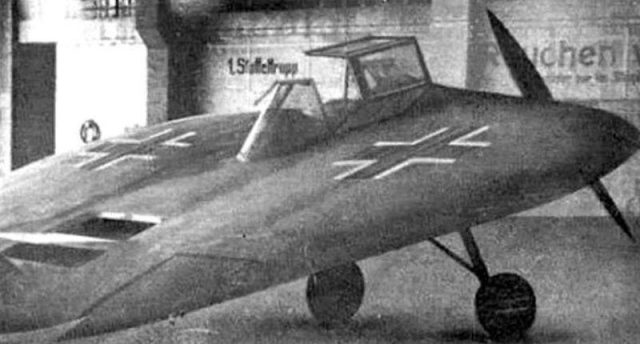 Sack AS-6
Sack AS-6
Likely, the only German aircraft of the Second World War, which is shaped like a UFO, is an experimental aircraft Sack AS-6, photographs of which have survived to this day. It seems curious that, that the only German disk-shaped aircraft project, advanced to the prototype stage, was created by a self-taught amateur. Back in the late 1930s, the project of a disk-shaped aircraft was proposed by Arthur Zak, ordinary peasant from near Leipzig.
That helped Zack, that Colonel General Ernst Udet became interested in his unusual aircraft, which gave Sack AS-6 a start in life. But the experimental aircraft was only ready for 1944 year. It is believed, that only one built copy reached flight tests. The prototype was built using various elements from other aircraft.. So, the cockpit was taken from the Me Bf-109B fighter, engine removed from Me Bf-108, on which an 8-cylinder air-cooled Argus with a capacity of 240 HP.
The Sack AS-6 had only a round wing that was truly native., which was made of wood and was sheathed with plywood. The total mass of a small aircraft with a wing diameter 6,4 did not exceed a meter 800 kg. But the plane failed to take to the skies.. Everything was limited only to runways on the runway. In conditions, when the Third Reich fell apart literally before our eyes, suffering serious defeats in the East and in the West, no one began to refine and bring to mind the project.
After the Second World War, interest in aircraft of an unusual round shape did not disappear anywhere.. Only now the Canadians have intercepted the palm, who tried long and hard to impose on their neighbors the unusual developments of the Avrocar company. The story about, how Canadians in the 1950s and early 1960s tried to sell their disk-shaped aircraft to the US military and implement the concept of a "flying jeep", deserves a separate story.
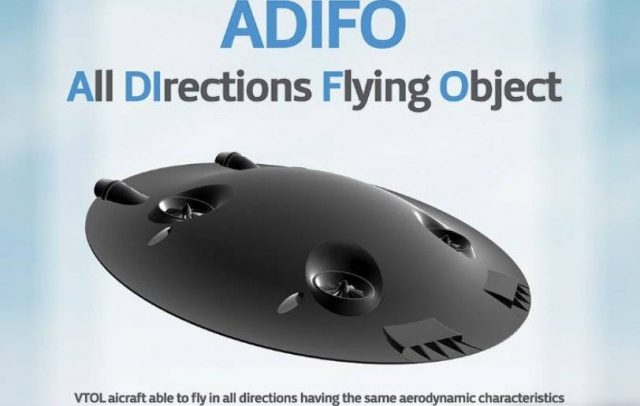
Despite numerous failures with an attempt to create disc-shaped aircraft, such projects still attract numerous engineers from different countries.
The latest news on the creation of "flying saucers" came to us from Romania, where the designers Razvan Sabi and Iosif Taposu are busy creating the device, capable of vertical takeoff and landing and horizontal flight at supersonic speeds. So far, only an unmanned prototype of a device with a diameter of 1,2 m.
known, that the experimental sample is equipped with four electric fans, which are necessary to ensure vertical takeoff and landing of the device, and two fans, installed in the tail section and designed for level flight. In the future, designers are going to replace tail fans with turbojet engines..
About, will the Romanian project of the ADIFO aircraft become successful (All DIrections Flying Object, all-course aircraft), we will find out in the near future.
/Sergey Yuferev, topwar.ru/








